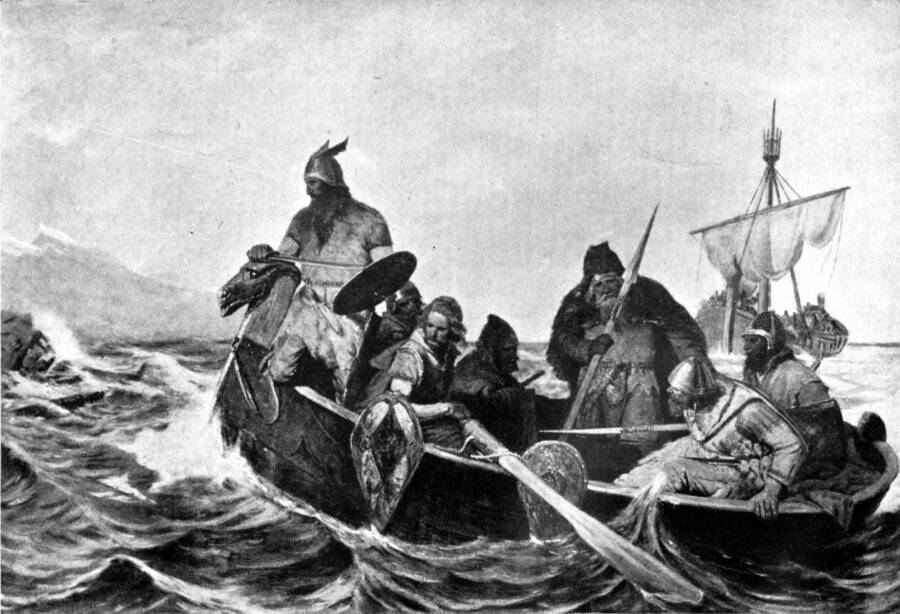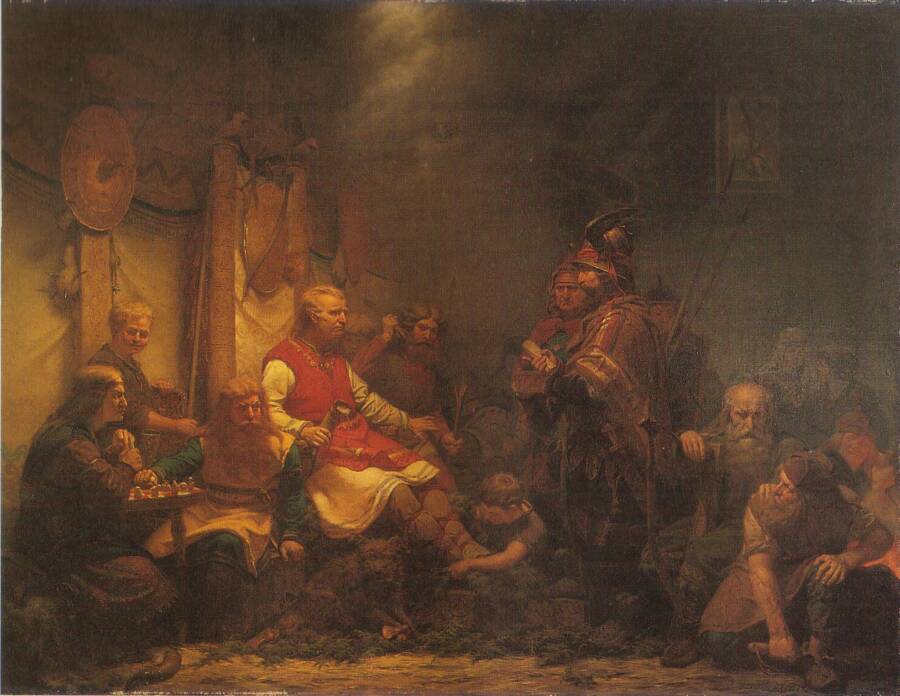Ivar The Boneless — The Fearsome, Crippled Viking Who Led A Brutal Invasion Of England

Public DomainIvar Ragnarsson couldn’t stand without being held up by someone else, yet he became one of the most feared Vikings in history.
Ivar Ragnarsson should have been killed at birth, according to Viking customs. Legends say that Ivar was born without a single bone in his body — he could never survive in the
He was spared, however, because his father, Ragnar Lodbrok, was one of the Vikings’ most powerful chiefs.
Later legends from England, however, described Ivar not as a boneless cripple but as a pagan demon sent from Hell. Viking legends called him a living god with supernatural powers.
Despite his weakened physicality, Ivar regularly fought alongside his warriors in battle. Known as the “Heathen Army,” they ravaged and slaughtered their way through England.
The Heathen Army “raided here and there and filled every place with bloodshed and sorrow,” English writer Simeon of Durnham wrote. “Far and wide it destroyed the churches and monasteries with fire and sword. When it departed from a place it left nothing standing but roofless walls.”

Public DomainThe Viking chief Ragnar Lodbrok and his sons.
When his army captured the Northumbrian capital of York, Ivar punished the city’s ruler, Ælla, by subjecting him to death via the “Blood Eagle,” ripping out his ribcage from behind and pulling his lungs out into the shape of wings before salting his bloody wounds.
When the Heathen Army later moved to conquer East Anglia, Ivar put its ruler, King Edmund, through such an arduous, painful death that the Christians sainted the fallen king, “Edmund the Martyr” — the king had been beaten, bound in iron chains, tied to a tree, and shot with so many arrows he’d resembled a porcupine.
Then, his head was cut off and tossed into the brambles.
Ivar the Boneless ultimately died in 873 B.C.E., likely succumbing to the sickness that had kept his bones so weak.
“The Norwegian king… died of a sudden hideous disease,” reads a text called the Annals of Ireland. “Thus it pleased God.”





